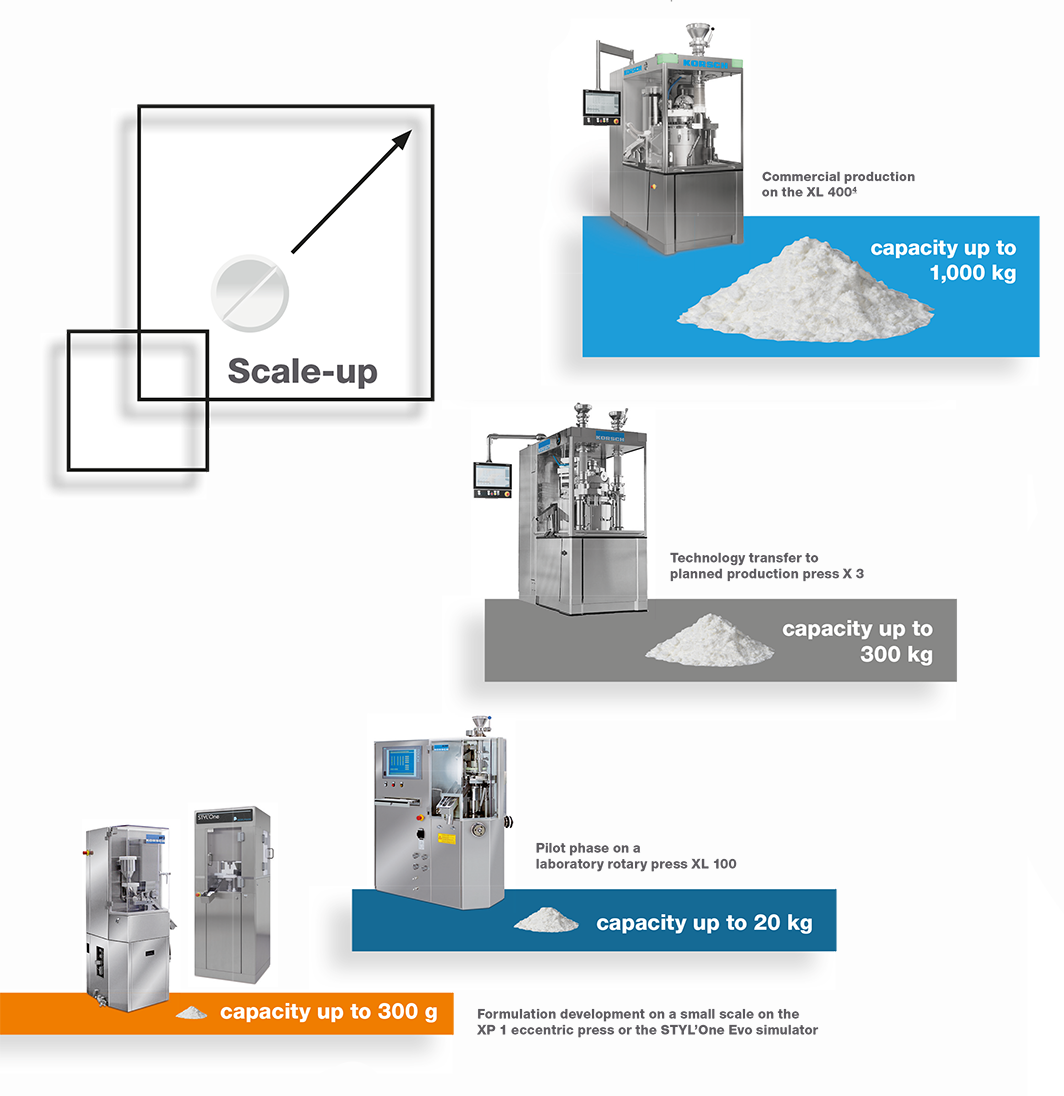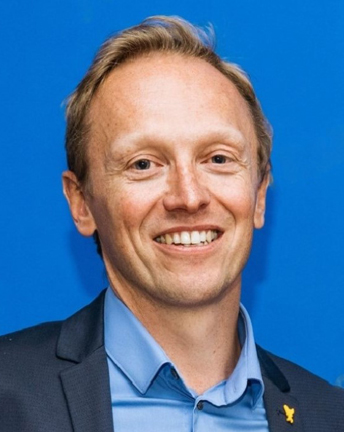From development phase to serial production
Tablets are also subjected to greater mechanical stress during serial production, e.g. during transport between the press and the dedusting system or even in the tablet collection device. This is an important factor to consider, especially for orodispersible (non-coated) tablets. Last but not least, there may also be changes in the API itself. Only a very small amount of the API is produced at the start of the product development phase; later, as API production is increased, the morphology of the API may also change as the synthesis process is enhanced, and this in turn may change its ratios. All this requires special consideration: if necessary, the production process must be adapted or the equipment modified. At worst, the product has to revert back to the development phase, in order for minor modifications to be made to the formulation.
Scale-up phases
Scaling up is a three-phase process: the initial, small-scale formulation development phase involves single punch presses and material volumes of just a few grams. Then - during the so-called pilot phase - a switch is made to rotary presses, and larger material volumes of up to 20 kilograms are processed. Actual production presses are only used during the third phase - with volumes of up to 300 kilograms per batch. "There is no manufacturing at our site, so this last phase takes place at the final production facility and involves a technical transfer," Bertels explains. But even during commercial production, quality attributes are continuously monitored in the early years. "We never stop learning new things about product and processes, even during the production phase," is how he explains this philosophy. Integrating equipment variability into the design space during formulation is a big help in this regard, Bertels says. If continuous manufacturing is planned instead of batch production, the last scale-up phase after the pilot phase is omitted. Final product development steps are actioned on the production machinery. Here, however, it is particularly important that the formulation retains its stability in the face of speed changes, Bertels emphasizes, as the production speed of the tablet press varies depending on material inflow.
Simulators mean fewer test runs
A wide range of compression behavior tests, including precompression force and production speed, can be carried out very early in the development process with the aid of R&D simulators. These tests provide accurate results that are representative of large tablet presses. "Although simulators cannot replace the pilot phase with a rotary tablet press, they do reduce the number of test runs required for the pilot and production phases," Bruno Leclercq, Business Development Manager at MEDELPHARM, explains. The benefits include significant savings of time and materials during the development process. Multilayer and core-coated tablets are also easier to develop using simulators. This represents an enhancement, because in the past this was time-consuming and only feasible in production sized machines. "In the past," Bertels recounts, "tableting was considered an art, where experience and intuition were the key factors. Nowadays it is a high-precision, scientifically based process, thanks to state-of-the-art software and tableting equipment."
Faster product development in the future
Comprehensive characterization of the API is becoming increasingly important. Its mechanical properties are investigated and defined even more systematically, leading to a more precise formulation. Improved computing power, the use of artificial intelligence or computer simulations such as FEM (Finite Element Modeling) also help to include and interlink more data. This minimizes trial-and-error testing and enables specific formulations to be developed more quickly. "But it will always be necessary to manufacture tablets in order to analyze them," is how Johny Bertels sums up the product development future.
Upscaling through "rescaling"?
When developing new products, it is essential to take account in the design space of the fact that they may be manufactured on a different production machine in the future. A study on a simulator helps here: it can specify some process parameters in extensive detail and include factors that vary greatly from machine to machine.
Even if a product was initially developed without such a study, a simulator can still provide valuable services at the time when product transfer is to be actioned. It can determine the necessary settings on the new production machine within a very short time, using little material. This significantly increases the chances that the three validation batches will be handled smoothly and successfully on the new production machine.

